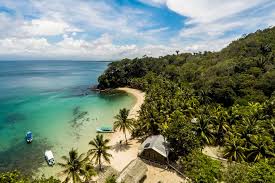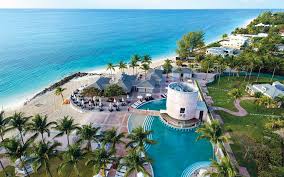Tours and prices in Cuba Cuba
 Life is not the days that have passed, but those that are remembered
Life is not the days that have passed, but those that are remembered
Gabriel Garcia Marquez
Cuba is rightly called the “Pearl of the Caribbean”, it is a real paradise for tourists. White beaches, crystal clear waters of the Caribbean Sea, coral reefs. Comfortable hotels offer all-inclusive services. Cuba has excellent conditions for scuba diving. But the main wealth of Cuba is the hospitable and cheerful people. To come to Cuba means to plunge into a whirlwind of entertainment and a sea of pleasures!
Geographical position of Cuba
Cuba is located in the western Caribbean. The territories closest to Cuba are the island of Hispaniola, where Haiti and the Dominican Republic are located, which lies 77 km to the east; The Bahamas – 140 km northwest; Jamaica – 146 km to the south; The United States lies 180 km to the north, and Mexico is 210 km to the west.
The island of Cuba, the island of Youth and other 1600 nearby islands and islets form the Cuban archipelago, the total area of the archipelago is 110,992 km2, of which almost 105,000 km2 are on the island of Cuba. The length of the island is 1250 km, the width varies from 32 to 210 km. On the coast of the island there are 290 natural beaches, which by their characteristics are completely safe for bathers.
Climate of Cuba
Weather The climate of Cuba, subtropical, is mitigated by the warm sea currents washing its shores. The maximum temperature – 35 ° C – occurs in August, while in January it can drop to 19 ° C. Water temperature ranges from 24 ° C in winter to 28 ° C in summer. The average temperature is 25 ° C, relative humidity is 81%.
Cuba population
Cuba is an oasis of communism The population of Cuba now stands at 11 million people, of which 65% are white, 12% are blacks, 22% are mulattos. The main religion is Catholicism, various African religions are widespread.
The official language is Spanish. The culture and art of Cuba is a mixture of Spanish, African and Afro-Cuban cultures.
Cuba Features
The national symbol of Cuba is the tokoro bird. The national flag of Cuba was raised for the first time in 1850. Three blue stripes mean the departments into which the island was divided at that time, two white stripes symbolize the purity of the Cuban people’s aspirations, a red isosceles triangle – the ideals of equality, fraternity and freedom, as well as the blood that must be shed to achieve them. One white star is a symbol of complete independence. The national flower of Cuba – mariposa, a beautiful white flower with a strong aroma, it was a symbol of rebellion during the struggle for independence. The national bird is tokoro, a member of the quetzal family. Its bright plumage contains all the colors of the Cuban flag.
Money of Cuba Monetary unit – Cuban pesos denominations of 10, 20, 50, 100 pesos (front and back) coins (obverse, reverse) 3 pesos, 1 peso, 1 peso, 20 centavos, 20 centavos, 5 centavos, 5 centavos, 2 centavo, 1 centavo.
Sanitary rules: the import of products of plant and animal origin is prohibited. Pets are allowed in the presence of appropriate sanitary documents.
Cuba – a stronghold of WOODU magic Customs rules: tourists do not need to fill out a customs declaration. It is forbidden to import drugs and pornographic materials, firearms into Cuba, with the exception of sports hunting rifles belonging to tourists who come to the country for this purpose and have the appropriate permit issued in Cuba upon arrival. The export of national property, precious metals, sea shells, antiquities and certain types of plants and animals from the country is not allowed. American Type A Outlet American Type B Outlet
Electricity: voltage in the electric network 110 V, current frequency 60 Hz, sockets with flat plugs (types A and B). In new hotels in European chains, 220 V and Euro sockets are used.
Sights of Cuba
Along the northern coast of the island of Cuba lies the long archipelago of the King’s Gardens (Jardines del Rey, Spanish: Jardines del Rey), named after the Spanish King Ferdinand II of Aragon, during which the discovery of America took place. There are Queen’s Gardens on the opposite side of Cuba, but we will talk about them another time.
Cayo Coco Island, Cuba
One of the islands in the King Gardens chain is Cayo Coco. “Cayo” means “islet” (as opposed to “isla” – the “real” large island, like Cuba itself or the island of Huventud). But “Coco”, contrary to expectations, comes not directly from a coconut or coconut palm tree, but from a coconut bird – a white ibis that lives in these places.
Cayo Coco Island, Cuba
Despite the fact that there are world-class hotels on the island, it is connected by regular flights and even a highway to Cuba, there are still wild forests and mangroves, you can see outlandish inhabitants, for example flamingos.
Flamingos on the island of Cayo Coco
The white beaches of Cayo Coco attract tourists, and the richness of the waters attracts amateur fishermen.



